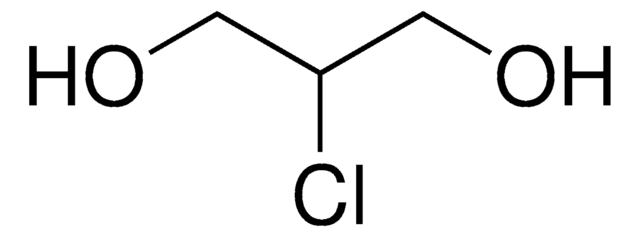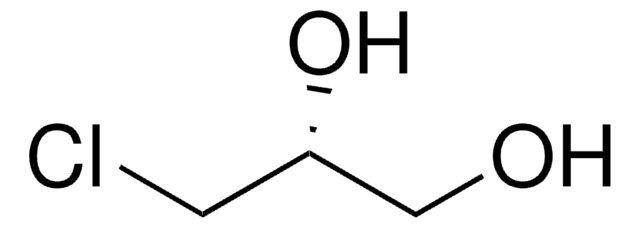Wichtige Dokumente
36295
2,3-Dichlor-1-propanol
≥97.0% (GC)
Synonym(e):
Glycerin-α,β-dichlorhydrin
Größe auswählen
About This Item
Empfohlene Produkte
Qualitätsniveau
Assay
≥97.0% (GC)
Dichte
1.360 g/mL at 20 °C (lit.)
Funktionelle Gruppe
chloro
hydroxyl
SMILES String
OCC(Cl)CCl
InChI
1S/C3H6Cl2O/c4-1-3(5)2-6/h3,6H,1-2H2
InChIKey
ZXCYIJGIGSDJQQ-UHFFFAOYSA-N
Allgemeine Beschreibung
Anwendung
Signalwort
Danger
H-Sätze
Gefahreneinstufungen
Acute Tox. 2 Dermal - Acute Tox. 3 Oral - Eye Irrit. 2
Lagerklassenschlüssel
6.1A - Combustible acute toxic Cat. 1 and 2 / very toxic hazardous materials
WGK
WGK 3
Flammpunkt (°F)
199.4 °F
Flammpunkt (°C)
93 °C
Persönliche Schutzausrüstung
Eyeshields, Faceshields, Gloves, type ABEK (EN14387) respirator filter
Hier finden Sie alle aktuellen Versionen:
Besitzen Sie dieses Produkt bereits?
In der Dokumentenbibliothek finden Sie die Dokumentation zu den Produkten, die Sie kürzlich erworben haben.
Kunden haben sich ebenfalls angesehen
Active Filters
Unser Team von Wissenschaftlern verfügt über Erfahrung in allen Forschungsbereichen einschließlich Life Science, Materialwissenschaften, chemischer Synthese, Chromatographie, Analytik und vielen mehr..
Setzen Sie sich mit dem technischen Dienst in Verbindung.










